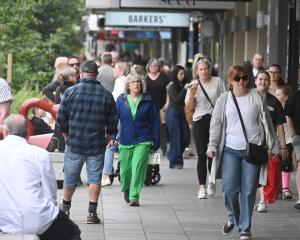
The Department of Conservation’s assessment of the tree that deemed it "hazardous" is being reviewed.
The Lake Kaniere community says safety must come first as the fate of the centuries old tree at the popular visitor spot is debated.
Tree enthusiasts have baulked at the proposal by Doc to fell the tree in the coming weeks.
At more than 600 years old, the lone mataī has earned a place on New Zealand’s notable tree register.
However, Doc announced last week its days were numbered.
The Lake Kaniere Property Association has supported the decision, albeit with a heavy heart.
"It’s a very difficult situation," chairwoman Therese Gibbens said yesterday.
"It’s so sad and it’s such an iconic tree, but as an association we don’t want to fight for something that might actually hurt somebody.
"You can see it’s got a massive hole in it, and black rot."
It was "mushy" to the touch.
Suggestions to brace the tree with metal rods or cordon it off were both unattractive and impractical.
The fall zone of the tree was "massive" and covered both roads and access to the south end of Hans Bay.

"Are they going to cordon off both roads so no-one can get to the motor camp or the boat ramp? It’s not practical."
A cordon would also affect about two-thirds of the picnicking area.
If anyone had a good look at the tree they would understand exactly the state it was in.
"We have an exceptional relationship with Doc and we trust their advice.
"It’s all about safety at the end of the day."
Heritage tree specialists have called for the assessment made on the tree to be released publicly.
"No-one wants to see an important tree removed but sometimes calls do have to be made — we just want the right call to be made in this instance," New Zealand Notable Trees Trust member Brad Cadwallader said earlier this week.
Doc Hokitika acting operations manager Tim Shaw said the tree had been assessed by Doc rangers with specialist training in the management of tree-fall hazards.
"This assessment included drilling of the tree to measure the width of healthy wood in the tree’s trunk, estimations of internal rot in the central trunk cavity, sap rot evident on the trunk’s exterior and surface root health.
"The assessment’s conclusion was internally peer reviewed."
The most obvious concern was the large cavity of rot at the base of the tree in its core.
"This is open on one side.
"The sap rot areas further up the trunk suggest this poor health is more extensive.
"The results of the drilling of the outer margins of the trunk were just within the department’s criteria, but in combination with the other observations and the impracticality of managing high visitor use within the tree’s fall radius, the recommendation was for its removal."
The tree’s health had been on Doc’s radar for some time as the poor health of the lower trunk was clearly evident.
The detailed assessment was undertaken on the initiative of a local ranger.
The announcement of the pending felling last week has sparked national attention.
"As a result of the press release, we have been contacted by someone with extensive experience in managing risk trees in urban environments.
"We have provided our assessment data to this person and are awaiting their independent advice.
"In the meantime, we have paused our planning for the tree’s removal." — Hokitika Guardian
By Janna Sherman











